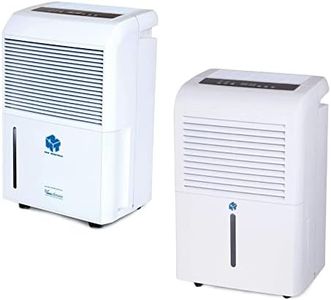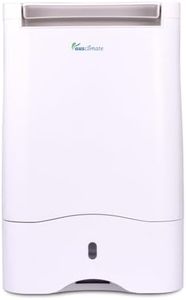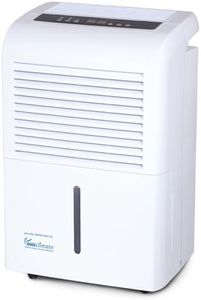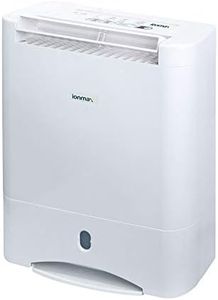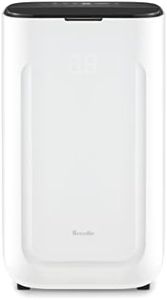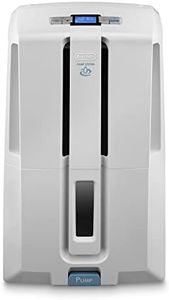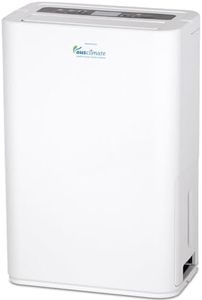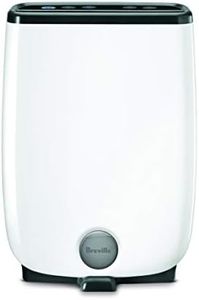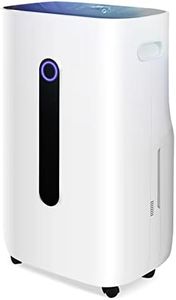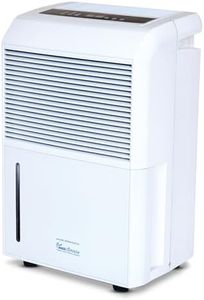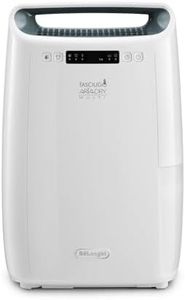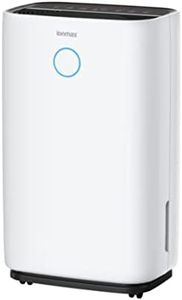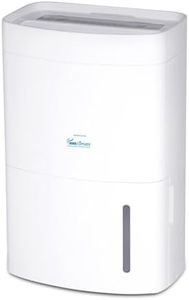We Use CookiesWe use cookies to enhance the security, performance,
functionality and for analytical and promotional activities. By continuing to browse this site you
are agreeing to our privacy policy
10 Best Dehumidifier For Grow Tents
From leading brands and best sellers available on the web.Buying Guide for the Best Dehumidifier For Grow Tents
Choosing the right dehumidifier for your grow tent is essential for keeping your plants healthy and ensuring optimal growth. Excess humidity in grow tents can cause mold, mildew, and other issues that harm plants. Picking a model that matches your grow tent size and needs will help you maintain a balanced environment and avoid these common problems. Before buying, consider not just the specifications, but also the practicalities like where you’ll place the dehumidifier and how easy it will be to maintain within the confines of your tent.Capacity (Pints per Day)Capacity tells you how much moisture the dehumidifier can remove from the air in a single day, usually measured in pints. This spec is important because grow tents can become very humid due to plant transpiration and watering. If you pick a dehumidifier with too low a capacity, it won't keep up, and if it's too high, you may waste energy and space. Small tents (under 50 sq ft) usually do well with units that remove 10–20 pints daily, while larger tents or rooms may need 20–40 pints or more. Think about the number of plants, how thick your canopy is, and local humidity. Choose based on the highest expected humidity levels you’ll encounter.
Physical Size and PortabilityPhysical size refers to the actual dimensions and weight of the dehumidifier. This is crucial because space is at a premium inside grow tents, and you’ll often need to fit other equipment like lights and fans. Smaller dehumidifiers are usually less powerful but fit easily in tight spaces. Larger units may offer better performance but can crowd your tent. Consider how much room you can spare and whether you need to move the unit around frequently. Pick the largest model that comfortably fits your available space while still providing adequate airflow.
Drainage OptionsDrainage methods dictate how the collected water is removed from the dehumidifier. Most units have a water reservoir you empty by hand, but others offer continuous drainage using a hose. This spec matters because a small grow tent can fill the tank quickly, requiring frequent attention. Manual tanks are fine for occasional monitoring, while continuous or automatic drainage is ideal if your tent is hard to access or you want a more hands-off setup. Choose the one that aligns with how often you’re able to check and empty the reservoir.
Humidity Control SettingsHumidity control settings allow you to set and maintain your desired humidity level inside the tent. This can be as simple as a dial or a digital interface with precise adjustments. It’s important because different plant species and growth stages require specific humidity levels. Some units only turn on or off, while others let you program exact levels. If you want fewer manual adjustments and better control, go for a dehumidifier with accurate digital settings. For basic needs, a simple on/off or limited settings model might be enough. Match your choice to how exact your plant requirements are.
Noise LevelNoise level indicates how loud the unit is when running, measured in decibels. Grow tents are often placed in living spaces or shared areas where excess noise can be an annoyance. Quiet units are available but sometimes at a higher price or lower performance. If your tent is far from sleeping or living areas, noise may not matter as much. Otherwise, opt for a quieter model, especially if you’ll be spending lots of time near your grow tent.
Energy EfficiencyEnergy efficiency shows how much electricity the dehumidifier uses while operating. This is essential if you want to keep ongoing utility costs low or if your tent is running other equipment that draws significant power. Look for units with energy-saving features or certifications like Energy Star for the best performance-per-watt. This is especially relevant if your tent runs 24/7 and you want to avoid high bills or overloading circuits.
